Translate this page into:
The Medical Journal of Goa: Arquivos de Escola Médico-Cirurgica de Nova Goa
[To cite: Pandya SK. The Medical Journal of Goa: Arquivos de Escola Médico-Cirurgica de Nova Goa. Natl Med J India 2023;37:284–9. DOI: 10.25259/NMJI_909_2023.]
A BRIEF HISTORY OF MEDICINE IN GOA
I have reviewed this subject in greater detail elsewhere.1 Here, I provide a brief summary.
Afonso de Albuquerque, soon after his conquest of Goa on St. Catherine day, 25 November 1510, established the Hospital Real do Espírito Santo (Royal Hospital of the Holy Spirit). From small beginnings near the chapel of St. Catherine in what is now called Old Goa, the Royal Hospital grew in stature and became the pride of successive viceroys of Goa and rulers of Portugal. Western medical education was first offered here to the Portuguese and to the native Indian population around 1546.
Amongst the pioneering physicians was Garcia da Orta. His classic book Coloquios dos simples, e drogas he cousas mediçinais da India… was published in 15632 and is a rich source of information on tropical medicine, pharmacognosy and ethnobotany of the period (Fig. 1). He worked at the Royal Hospital and may have taught medicine there. Respect for his learning led to invitations to take part in the examinations for conferring medical degrees.
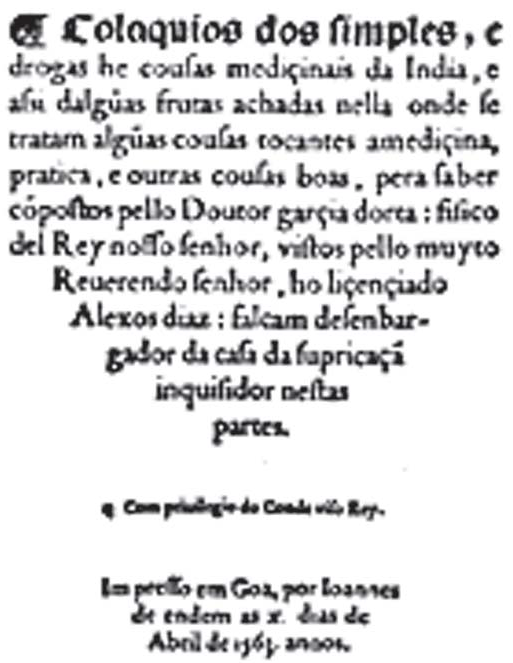
- Title page of Dr Garcia da Orta’s classic book published in 1563
It is worth noting that this book was published at the Jesuit Saint Paul College in Old Goa, established in 1556. It was the first printing press in India. (https://en.wikipedia.org/wiki/ Printing_in_Goa, accessed on 9 June 2020).
Boxer3 provides a comparative analysis of the contributions of Garcia da Orta and Nicolas Monardes—two pioneers of tropical medicine.
The Royal Hospital fell upon bad times in the late 17th and early 18th century. Since there were no physicians on its staff, teaching came to a halt. Desultory attempts were made at medical education, but it was only in 1842 and after the transfer of the Hospital Militar to Panjim that the Escola Medico-Cirurgica de Nova Goa was founded. The last two words in its title distinguish it from the school in Old Goa. Starting with an initial batch of 8 students, it rose to eminence in the Portuguese-speaking world. Subsequently, it was known as Goa Medical College.
EARLY MEDICAL JOURNALS
Archivo de Pharmacia e Science Accessories da India Portuguesa, a monthly pharmacy journal was published in 1860 (Fig. 2). It was edited by Antonio Gomes Roberto, Professor of Pharmacy at the Escola Medico-cirurgica da Nova Goa. It contained information on medicinal plants and minerals. It shut down in 1871.
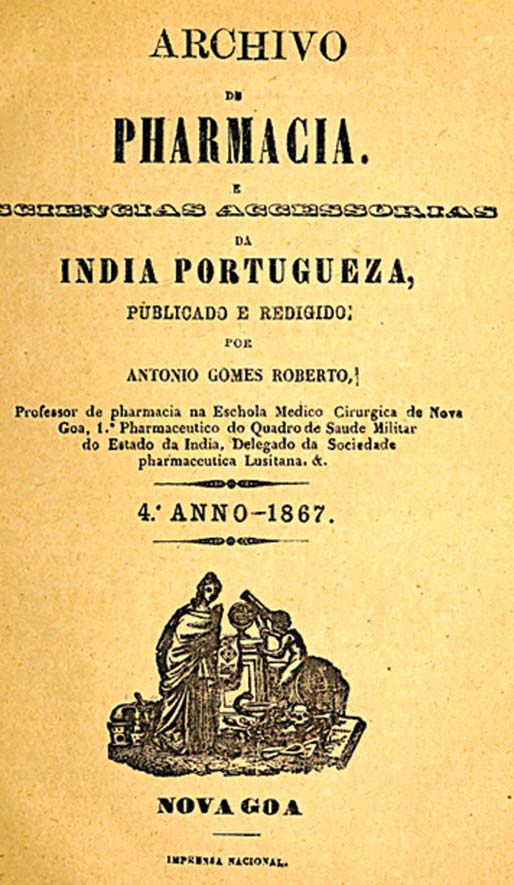
- Title page of Archivo de Pharmacia 1867
I was able to trace just one volume of this journal dated 1867. In it is this interesting paper on cholera among the Hindus (Fig. 3).
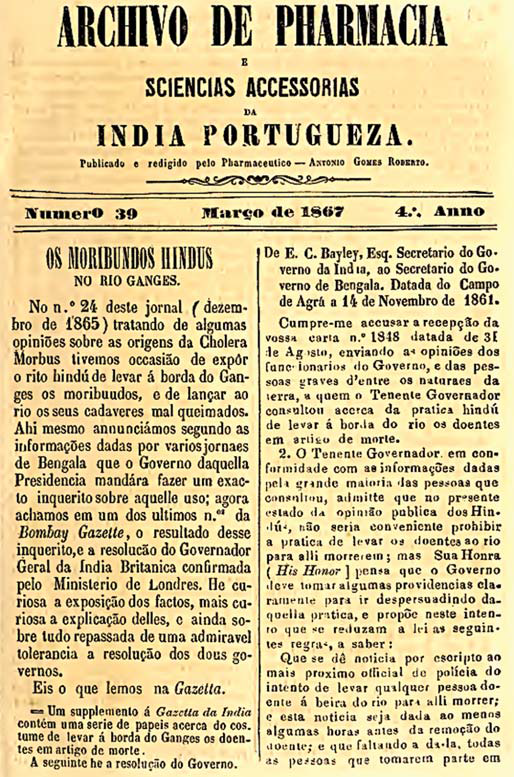
- Essay on illness of Hindus—cholera
Most of the other papers relate to drugs of plant origin and on pharmacy as it was then.
Another monthly journal, Archivo Medico da India, on medicine and pharmacy was edited by Pantaleao Ferrao of Bastora. The journal was started in July 1894 and continued up to May 1896. It contained information about medicinal plants.
Archivos Indo-Portugueses de Medicinae Historia Natural was published from 1921 to 1926. It appears to have been on the brink of extinction when Dr Froilano de Mello revived it as Arquivos da Escola Medico-Cirurgica de Nova Goa. (https://gcp.goa.gov.in/about-us/, accessed on 14 Jan 2022).
I could not find any issue of these earlier journals.
DR FROILANO DE MELLO
Colonel Professor Dr Froilano de Mello (1887–1955) was appointed to the Escola as a professor at the age of 23 (Fig. 4). He rose to become one of its most respected Directors (1927– 1946). His life, work and papers on the history of the medical school of Goa, leprosy, malaria, tropical medicine and public health have been analyzed by Cristiana Bastos.4 She has also provided a bibliography of his publications.
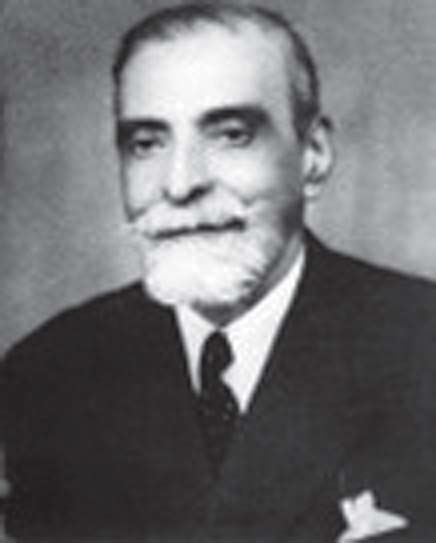
- Portrait of Dr Froilano de Mello
Dr de Mello felt the need for a journal that would record the findings and medical experiences of the teachers in the medical school and its accompanying hospital. He resuscitated the Archivos Indo-Portugueses de Medicinae Historia Natural as Arquivos da Escola Medico-Cirurgica de Nova Goa in June 1927. (http://memoria-africa.ua.pt/Library/ShowImage.aspx?q=/AEMCG/AEMCG-A-N020&p=3, accessed on 17 Jul 2021).
Arquivos da Escola Medico-Cirurgica de Nova Goa
This was the first medical journal in the Portuguese colony in Goa and, indeed, in all its Indian colonies that remained in publication for several years. The size of individual volumes varied from 70 pages (1927) to 621 pages (1937).
Information on its frequency of publication and the date on which the last issue was published is not easily available.
Arquivos published papers in Portuguese, French and English. Some of the papers in Portuguese and French carried a summary in English.
The length of papers varied considerably. Occasional issues were devoted to a single topic. A few contained extended papers that filled the issue. One example: two papers by Dr Pacheco De Figueiredo occupied pages 36–112 and 119–237 in fascicle 33 in 1960. Arquivos was published at least till 1961. Series A–Part 33 was brought out in 1960 and a special issue in 1961.
I could not find any issue after 1961.
The entries in The National Library of Medicine (Bethesda) Catalog are depicted at Tables I and II.
| Arquivos : | Serie A. |
|---|---|
| Author(s) : | Ecola Medico-Cirurgica de Nova Goa |
| Title(s) : | Arquivos. Serie A. |
| Other title(s) : | Arquivos da Escola Medico-Cirurgica de Nova Goa, serie A |
| Continued by : | Arquivos da Escola Medico-Cirurgica de Goa, serie A |
| Supersedes : | Arquivos indo-portugueses de medicina |
| Publication start year : | 1927 |
| Publication end year : | 1956 |
| Country of publication : | India |
| Publisher : | Bastora, 1927-[194-] |
| Arquivos : | Serie B. |
|---|---|
| Author(s) : | Escola Medico-Cirurgica de Nova Goa (1847-1945) |
| Title(s) : | Arquivos. Serie B. |
| Other title(s) : | Arquivos da Escola Medico-Cirurgica de Nova Goa. Serie B |
| Publication start year : | 1927 |
| Publication end year : | 1940 |
| Country of publication : | India |
| Publisher : | Bastora |
The Department of Printing and Stationery, Government of Goa provides information on a few issues of the journal (Table III; https://goaprintingpress.gov.in/portuguese-reference-books-2, accessed on 17 Aug 2023)
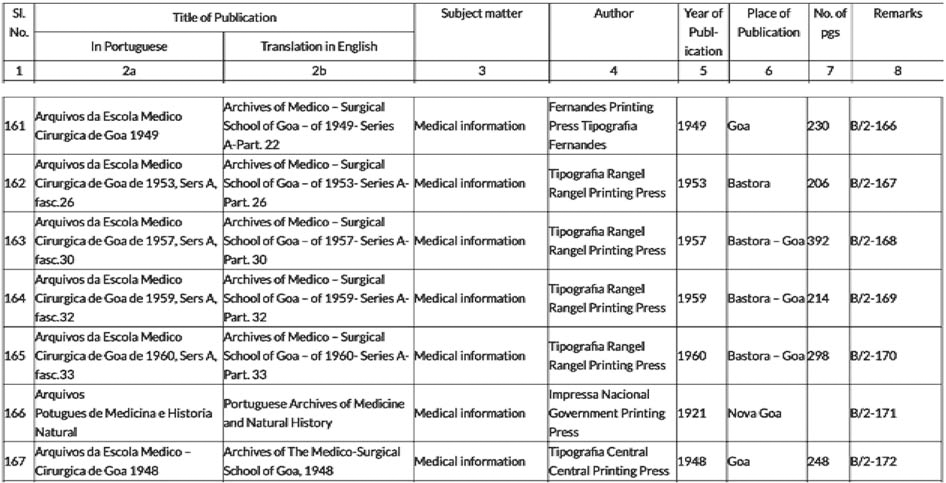 |
Some issues of the journal feature the table of contents, entitled Summario (Table IV). Several are without this and one must go through the entire issue to learn about the topics covered.
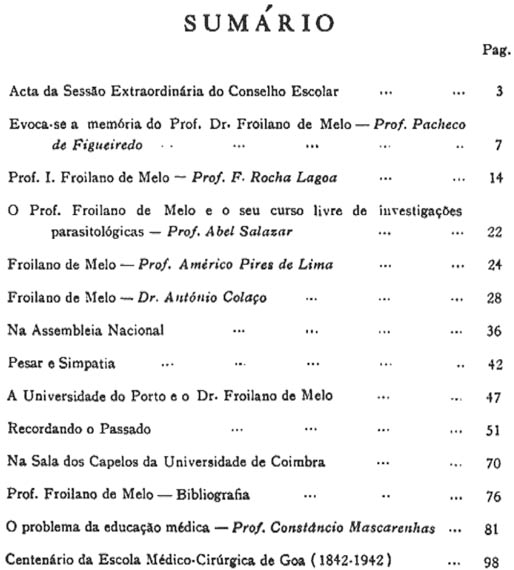 |
The first editor was Dr Francisco Newton João Vicente da Piedade Jaime Valfredo Rangel (1897–1950). He is commonly referred to as Jamie Rangel (Fig. 5). In 1886, his father, Vincente Joao Janin Rangel, had founded the publishing house of Tipografia Rangel in Bastora, on the outskirts of Mapusa. Dr Jamie Rangel later took over and published not only the archives of the Goa Medical College but also numerous newspapers, books and other publications that became classics in Portuguese Indian literature. It remained in operation till 1994.
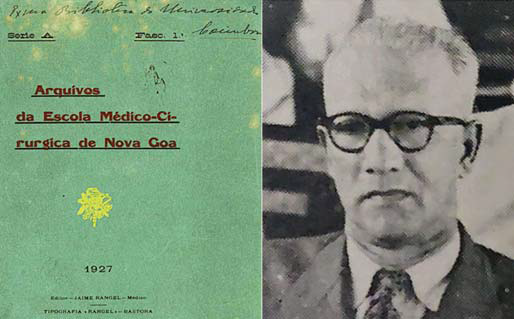
- An issue of the journal and portrait of its editor, Dr Rangel
Dr Rangel excelled in languages and taught Portuguese at the Sacred Heart of Jesus School in Parra, Goa.
He completed his matriculation in Bombay in 1915 and graduated in medicine in 1922 from the Escola in Nova Goa. In later life, he was a councillor and President of the Municipal Corporation in Bardez. He built roads and gardens, including the first concrete road in Mapusa. The Portuguese government appointed him their representative in the International Labour Organization of Portugal. He was an ardent supporter of women’s education.
The logo on the cover of Arquivos altered with time. The Aesculapian staff and serpent were featured but the staff was modified to incorporate at its upper end the bowl of Hygeia, the daughter of Aesculapius (Fig. 6).
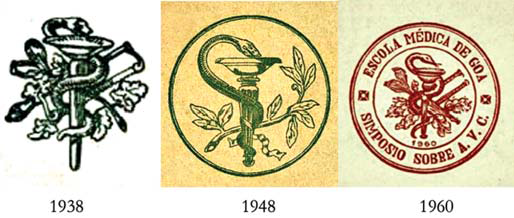
- Modified logo on the cover of Arquivos over the decades
ARQUIVOS CONTAINS A FASCINATING RANGE OF PAPERS
Dr Alberto C. Germano de Silva Correia was an especially prolix author. He was popularly referred to as Germano Correia. His anthropological study of Mussulmans in Portuguese India5 occupies 440 pages. Written as a tribute to his teacher and friend, Dr Georges Ferdinand Papillault, this essay, with photographic illustrations, is a scholarly work incorporating details on history, social customs and anthropological observations.
In 1939 Dr Correia wrote in French of Les Bayaderes6 (dancing temple girls in Indian temples) and prostitution in India with the focus on Portuguese territories in it (1939). He quoted writings from the Vedas, texts such as Ramayana, the teachings of Manu, the observations of travellers such as Bernier, statements by Gandhi pleading for the empowerment of women, books such as Katherine Mayo’s Mother India and works by western and Indian scholars. He reviewed the way women were generally treated in India, female infanticide, devadasis, music and dance performances in temples featuring them, how young girls were brought into prostitution and much more. Such a review in a general medical journal is at once unusual and admirable. This text covers pages 61–384.
Dr Correia was a physician–historian. ‘Himself a Luso-descendent, he expressed some degree of resentment for being treated as a colonial by the Portuguese authorities. Sometimes he indulged in racism to prove the pure Europeaness and Aryanism of his group in response to the prejudice that prevailed in British India about Goans being of mixed race… Most of Germano Correia’s work seems to be about claiming the Portugueseness of himself, Goa, and the Medical School.’7 His writings, though comprehensive, must be viewed in the context of this bias.
Dr Correia was appointed Dean of the Escola in 1947. Panduronga Pissurlencar (the name of the author is in the Portuguese format), writing in 1927 in French, provided one of the earlier discussions on the history of medicine in Portuguese Goa8. Dr Pissurlencar was a distinguished historian and Director of the historical archive of Goa. In 1948 the Royal Asiatic Society of Bengal awarded him the newly instituted biennial Sir Jadunath Sarkar Gold Medal for contributions to Indological researches.
The next year, the journal carried an anthropological report, also in French. Dr Germano Correia9 provided data on measurements of different parts of the body including the head in Portuguese descendants in India. He also described prevalent diseases such as paludism (malaria), tuberculosis, typhoid, dysentery and syphilis. The anthropological contributions of Dr Pierre Paul Broca––better known to us for his neurological studies––were discussed. In addition, the report contained data on history, demography, geography and climate of Goa and other Portuguese dominions in India.
Dr Manuel de Miranda’s essay10 is not unexpected in the land that bred Abbe Jose Custodio de Faria. Indeed, his paper on hypnotism refers not only to Abbe but also to Professor Bernheim of Nancy, Charcot and others. Miranda concluded that hypnotism was useful in a long list of conditions that included somnambulism, automatism and catalepsy.
In 1929, Dr Froilano de Mello’s presentation at the tropical medicine conference in Calcutta (now Kolkata)11 dealt with the clinical and epidemiological features in epidemic cerebrospinal meningitis after 1919 in Portuguese India. When published in Arquivos, this paper was spread over pages 393–424.
Dr Froilano de Mello’s paper entitled Levures et levuroses12 dealt with fungi as agents of disease. As we study the paper, we come across the name Hansen frequently. We should not be misled by Dr de Mello’s interest in leprosy for the reference here is to Dr Emil Christian Hansen (8 May 1842–27 August 1909), a Danish mycologist and fermentation physiologist.
It featured numerous well-deserved tributes amongst other papers. One essay was on the centenary of the Escola.
In his essay (pages 81–97), Dr Mascarenhas quoted the words of Nobel prize winner, Dr Charles Richet: ‘If you aspire to live eternally in the memory of men, enter your laboratory imbued with the ardent faith of the neophyte who aspires to martyrdom to make to his God the sacrifice of his own life.’
DR JOAO MANUEL PACHECO DE FIGUEIREDO (1901–1989)
Dr Froilano de Mello was followed some years later by the equally charismatic Dr Joao Manuel Pacheco De Figueiredo (1901–1989).
Dr Figueiredo was the last Director of the Goa Medical School under Portuguese rule and the first Dean after the liberation of Goa (Fig. 7). He was acclaimed for his studies in neurology and anthropology in addition to those in general medicine. He was also an eminent medical historian with papers in reputed international journals. He was the expert witness at the examination of the body of St. Francis Xavier on 23 June 1951.14 The road leading to Caculo Island from D.B. Road is named after him.
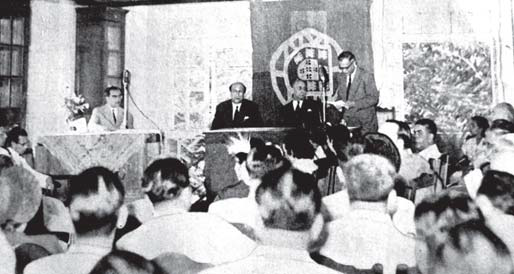
- Director Dr Pacheco de Figueiredo inaugurates course on Haematology, haemotherapy and reanimation at Escola Médica Cirúrgica in Goa (This is the only photograph I have been able to find of this illustrious physician.)
In 1935 he published an interesting study on the blood groups of 509 individuals of Goa, 309 Christians and 200 Hindus.15 He compared his findings with those of earlier studies (Tables V and VI).
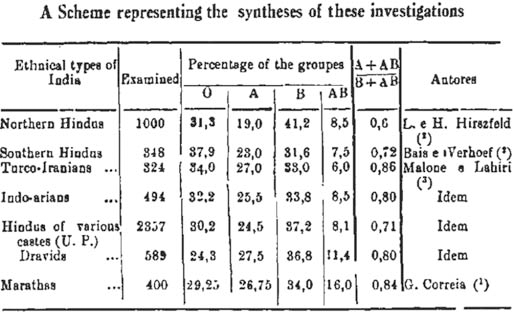 |
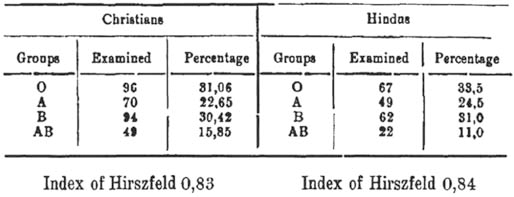 |
He concluded that there was not much difference in the two groups when his findings were correlated with studies on the Hindus of Ceylon. We can only wonder whether this was to be expected, given that at that time, many of the Christians were converts from Hinduism.
An issue of Arquivos in 1960 featured papers by Dr Pacheco de Figueirado.16,17 His historical account of the Escola was on pages 119–237 (Table VII).
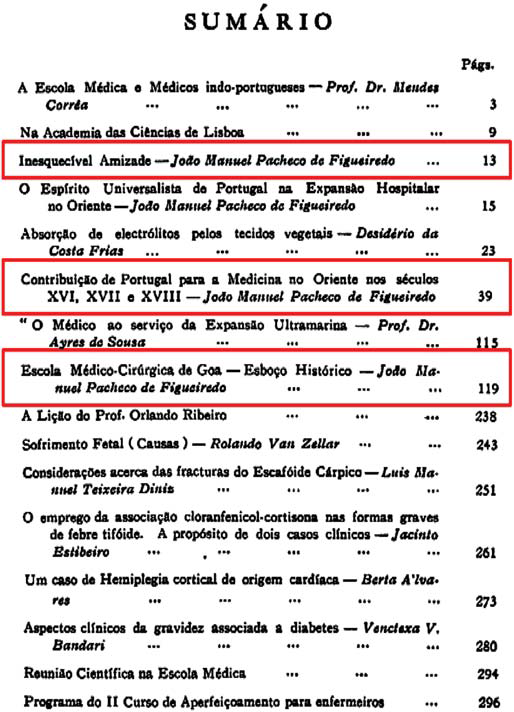 |
THE ARQUIVOS DESERVES STUDY
Apart from medical texts, several issues feature extensive anthropological studies. As with all historic medical journals, there is much that is fascinating in the volumes of the Arquivos as well. Let me whet your appetite with a few more examples of the texts to be found in it.
Dr Soares da Veiga18 wrote in Portuguese on osteo-articular lesions in leprosy as seen on radiographs. The paper carries clear reproductions of photographs showing the different stages of leprosy damaging the hands and feet. I reproduce a few of these (Figs 8 and 9).
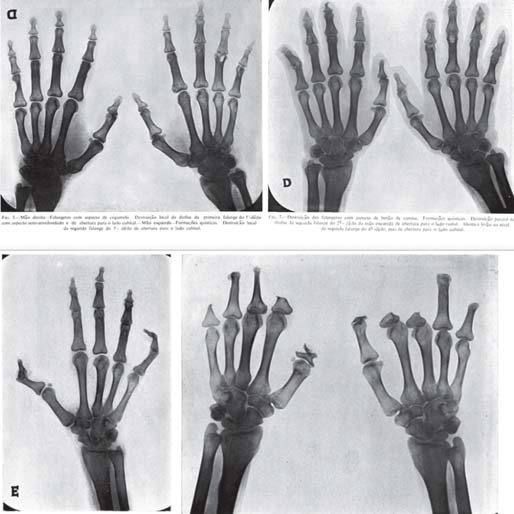
- X-ray images showing progressive damage to the fingers over time by leprosy
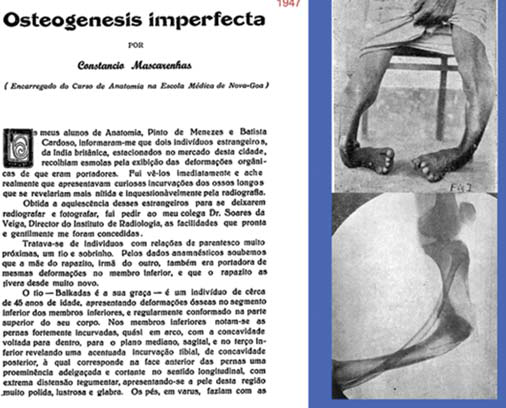
- The paper entitled ‘Osteogenesis imperfacta’19 carried a clinical photograph and a radiograph
Dr Germano Correia’s essay on the Hospital Real of Goa in the 16th and 17th centuries20 covered pages 159–248.
There is, of course, much more but I must leave you to explore and discover. The best place to do so is in the library of the Goa Medical College. When I visited it some years ago, these treasures were stored in the basement. It is possible that they have since been brought together and displayed with the care and respect they deserve.
References
- Colóquios dos simples e drogas he cousas medicinais da Índia e assi dalgiuas frutas achadas nella onde se tratam algiuas cousas tocantes a medicina pratica e outras cousas boas pera saber. [Conversations on the simples, drugs and materia medica of India and also on some fruits found there, in which some matters relevant to medicine, practice, and other matters good to know are discussed]. Goa: St. Paul’s College;;
- [Google Scholar]
- Two pioneers of tropical medicine: Garcia d’Orta and Nicolas Monardes London: Wellcome Historical Medical Library. Lecture Series No. 1; 1961.
- [Google Scholar]
- From India to Brazil, with a microscope and a seat in Parliament: The life and work of Dr. Indale~ncio Froilano de Melo. HoST. 2008;2:139-89.
- [Google Scholar]
- Les Mussulmans de L’Inde Portugaise Etude anthropometrique, ethno-serologique, morphologique et ethnographique. Arquivos de Escola Medico-Cirurgica de Nova Goa 1937:87-216.
- [Google Scholar]
- Les Bayaderes et les autres courtisanes de l’Inde Portugaise Arquivos de Escola Medico-Cirurgica de Nova Goa. Serie A, Fasc. 13, Tipografia Rangel-Bastora 1939:61-384.
- [Google Scholar]
- Crossing colonial Historiographies: Histories of Colonial and Indigenous. Medicines in transnational Perspective In: Anne Digby, Waltraud Ernst, Projit B Muhkarji, eds. Newcastle upon Tyne.. Cambridge Scholars Publishing.; 2010.
- [Google Scholar]
- Les Lusos-Descendants de l’Inde Portuguaise (Etude anthropologique) Arquivos de Escola Medico-Cirurgica de Nova Goa 1928:87-216.
- [Google Scholar]
- Indalencio Froilano de Melo - Director da Escola Medico-cirurgica de Nova Goa (1927-1946) Serie A. Fasc.. 28
- [Google Scholar]
- Arquivos de Escola Medico-Cirurgica de Nova Goa. Serie A, Fasc. 13, Tipografia Rangel-Bastora 1939:44-60.
- [Google Scholar]
- Arquivos de Escola Medico-Cirurgica de Nova Goa. Serie A, Fasc. 21, Tipografia Central 1948:159-248.
- [Google Scholar]




